
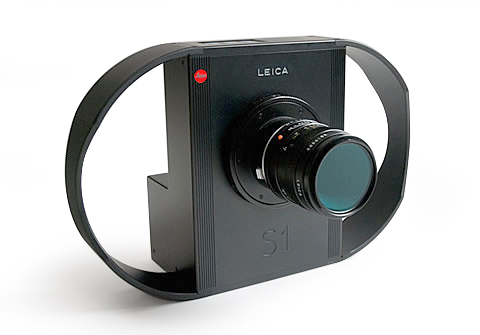
Ha valakiben felmerült, hogy vajon miért Leica S2? Igen, volt S1.
Leica S1: egy digitális stúdiógép 1997-1998 (3 változatban, a 6,6 megapixeltől 26 megapixelig).Technikailag ez egy CCD-scanner, amely több tíz másodperc alatt olvasta be a képet. Hát ezért S2. Szerintem aranyárban volt, ha találok árat, beírom.
Találtam egy cikket róla, érdekes lehet:
Way back in the Stone Age of digital imaging (circa 1996), when 2 to 3MP digicams that took so-so pictures cost over a thousand dollars and pro-quality DSLRs were still a stretch - both technically and financially for most shooters, Leica unveiled an amazing digital camera called the S1. Now keep in mind this was a time when film was still the media of choice, the Leica M6 was still the best film camera money could buy, and stock houses were still trying to figure out how to manage pictures that only existed electronically.
 The S1 was in fact a digital scanning back designed to capture square (36x36mm) images using 35mm lenses. Though designed with Leica R-series lenses in mind, Leica also offered lens mounts for Nikon, Contax, Canon FD, and Minolta lenses as well as for medium-format optics from Hasselblad and Pentax (6x7). There was also a Novoflex adapter that allowed you to use large-format optics from Rodenstock & Schneider, and a tilt-shift adapter for use with Hasselblad lenses.
The S1 was in fact a digital scanning back designed to capture square (36x36mm) images using 35mm lenses. Though designed with Leica R-series lenses in mind, Leica also offered lens mounts for Nikon, Contax, Canon FD, and Minolta lenses as well as for medium-format optics from Hasselblad and Pentax (6x7). There was also a Novoflex adapter that allowed you to use large-format optics from Rodenstock & Schneider, and a tilt-shift adapter for use with Hasselblad lenses.
The S1 could also be coupled to the rear of a view camera to take advantage of tilt, swing, and shift movements. As for focusing the S1, you used the camera's angled, laterally correct, gridded focusing screen.
 Because it was a triple linear CCD scan back the S1 recorded images line-by-line and exposures ran about 185-seconds each. As such, the S1 was optimized for use with continuous light sources including HMIs, fluorescents, and halogen lamps.
Because it was a triple linear CCD scan back the S1 recorded images line-by-line and exposures ran about 185-seconds each. As such, the S1 was optimized for use with continuous light sources including HMIs, fluorescents, and halogen lamps.
Though slow, the S1 yielded 76Mb @ 24-bit (151Mb @ 48-bit), 5140 x 5140, 12-bit RGB image files that contained little if any of the artifacting, blooming, and fringing that continue to plague us to this very day. The native ISO for the S1 was an honest ISO 50, the D-max about 3.3, and the image files contained a dynamic range that spanned 11-stops of latitude.At 300 dpi you could produce incredibly sharp 17 x 17" prints without having to interpolate the image, which in 1996 was a really big deal.
Included with the Leica S1 was a 55mm IRa filter, LaserSoft High Software, a PCI card (PC or Mac), and a 20' cable. As for system requirements, the S1 ran off of PowerMacs (7.55 or higher), or Pentium PCs (Windows 95 or higher) with a minimum of 256MB of RAM, a hard drive of at least 1GB, and Photoshop 3.05 or higher.
(www.bhphotovideo.com)

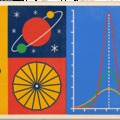
![Objektív történet: Gauss teleszkóp, Gauss-típusú obj. [3]*](https://m.blog.hu/in/inphoto/image/.external/.thumbs/c5f951c11313f078b0704e9e01feedd5_669ba6b3c379af695492e9efd7630b86.jpg)
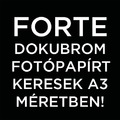
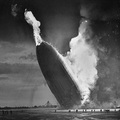
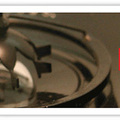
marykutya2 2010.10.26. 19:16:58
The S1, The first digital Leica 1998
Peter Werner , Jun 07, 2006; 02:06 p.m.
It may have been mentioned before on this forum. But as a reminder to those claiming Leica has no experience of digital imaging:
In 1998, Leica introduced the award winning Leica S1 high end digital camera. Leica S1 has a CCD chip with resolution of 5140 x 5140 pixels and 36 bit depth. According to Leica, S1 could create a picture 17" x 17" with dymanic range of 2000:1, rivalling the best of 35mm transparancy. The model was priced at $21, 500.
gromek7 2010.10.27. 06:02:44
Romanee Conti 2010.10.27. 08:00:08
marykutya2 2010.10.27. 12:18:16
www.promarketinc.com/pdf/agfastudiocam.pdf
Gromek7
-táp azvan mindenféle itt a vegyesboltban ! csirke,malac,kutya , RC -nek nincs egy kis felesleges vizsla
TÁP ? Hátha jó az AGFA ba is !
- Aztán még a végén tápkétségbe esek , hogy nincs tápegység
/bocsi, mindez annak köszönhetö ,reggel bájos légkalapács hangra ébredtünk a vízmüvek részéröl :)
gromek7 2010.10.27. 21:28:27
marykutya2 2013.07.29. 14:24:26
A héten a gyerekeim eltaláltak 2 számot az ötből, ha statisztikailag így
javulnak akkor 3 hét múlva az összes inphotost megívom egy tetszőleges arany vagy platina vagy krokodil bevonatú bármilyen pixeles vagy ezüstös csodára.Úgy legyen, hehehehe.